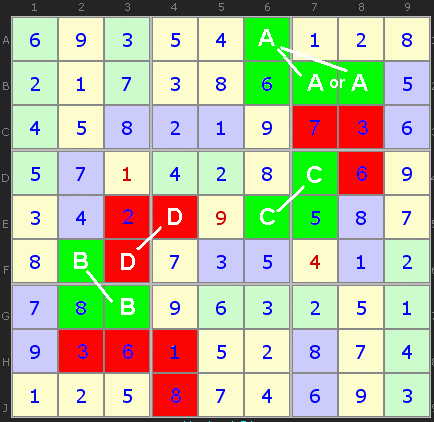The Killer Cage Convention

In Killer Sudoku clues are placed inside 'cages' - which ring a certain number of cells. The clue number is the sum of the solutions to those cells. It is theoretically possible for a cage to contain two of the same numbers if the cage forms an 'L' shape or 'dog-leg' over two boxes. Examples are to the right in bold red and green.
From the earliest days of Killer Sudoku there has been a convention that no cage should contain duplicate numbers - which applies to these special types of cage. If a cage could contain duplicate numbers then it would greatly increase the number of combinations of solutions.
There are six 'dog-legs' in this example, some have A-A, B-B etc showing where possible duplicate numbers could go - but do not.
All the puzzles on this site and ones I publish conform to this convention, but you might find other publishers ignore this constraint. If you enter such a puzzle into the Killer Solver it will not work.
The convention does not apply to KenKen or Kendoku as designed by the people at www.kenken.com.

Comments
Email addresses are never displayed, but they are required to confirm your comments. When you enter your name and email address, you'll be sent a link to confirm your comment. Line breaks and paragraphs are automatically converted - no need to use <p> or <br> tags.
... by: Brett Yarberry
... by: David N. Jansen